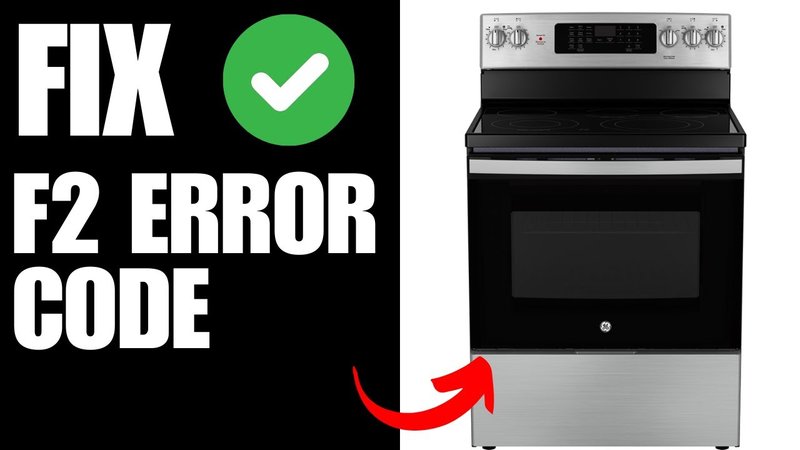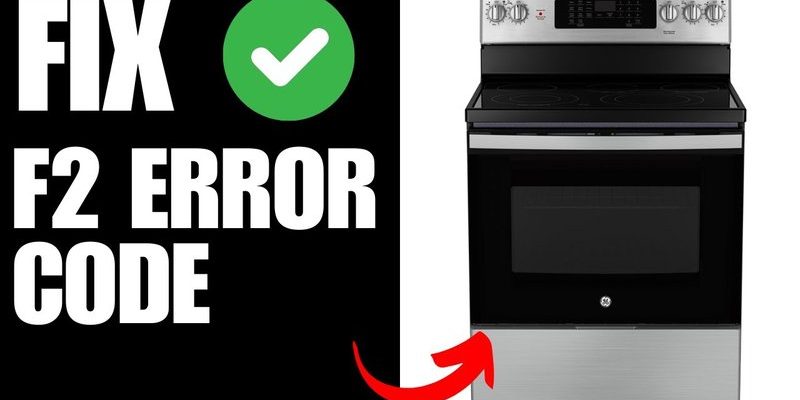
Understanding warranties can feel like navigating a maze. They often come with legal jargon that makes you want to throw up your hands in confusion. Simply put, a warranty is a promise from the manufacturer that they’ll fix or replace your microwave if certain problems arise within a specified period. But, like in a game of hide and seek, there are always rules about what is and isn’t covered. So, let’s dive into whether your GE microwave’s pesky F2 error code is something they might fix for free or if it’s something you’ll have to handle on your own.
Why Does the GE Microwave F2 Error Code Happen?
Understanding the specific reasons behind the F2 error code is the first step to addressing it. Essentially, the F2 error code is like the microwave’s way of waving a red flag; it’s signaling that there’s trouble in the control area. The keypad is the most common culprit. Over time, as you press the buttons, they can wear down or get stuck, sending a constant signal to the control board that something’s amiss. Imagine continuously pressing your car horn — eventually, it might just stop working or sound all the time. That’s somewhat similar to what’s happening here.
Another possible cause could be a malfunction in the control board itself. Think of the control board as the brain of your microwave. If it’s not functioning well, nothing else will either. This component might be struggling due to electrical surges or simple wear and tear, just like any other electronic device in your home. Moreover, moisture from routine cooking can sneak into the keypad or control board, causing them to short out. Think of it like getting water inside your phone; things can get glitchy really fast.
Knowing what causes the F2 error can help you discuss the issue with customer service or a repair technician. It’s also helpful if you’re trying to understand whether this falls under “normal wear” that could potentially be covered by a warranty. After all, if it’s something the manufacturer considers a common defect, that strengthens your case for coverage.
Is the Error Code F2 Covered Under Warranty?
Now onto the big question: Is this pesky F2 error something that GE’s warranty will cover? The answer isn’t as straightforward as we’d all like. Generally, warranties for appliances like microwaves cover manufacturing defects and issues arising from normal use within a specific time frame — usually one year for parts and labor, but it can vary. So, in some cases, if the F2 error is determined to be due to a manufacturing defect, then yes, it may indeed be covered under warranty.
However, there are catch-phrases like “wear and tear” or “user damage” that might limit coverage. If GE decides that the issue was caused by improper use or accidental damage, they may not honor the warranty. It’s kind of like having car insurance that doesn’t cover you hitting the curb because they might consider it your fault. This can be a gray area, so it’s essential to read the fine print of your warranty agreement or contact GE directly for clarification.
If your microwave is still under warranty, your first step should be reaching out to GE’s customer service. Explain the problem clearly and ask if it’s covered. If it is, they’ll guide you on what to do next, which often involves setting up a service appointment. And if it’s not, they might still offer suggestions for repair options, maybe even at a reduced cost.
What If It’s Not Covered Under Warranty?
Let’s say you’ve gone through the warranty details, and unfortunately, the F2 error isn’t covered. What then? You’ve got options, so don’t despair. First, consider a repair. You can contact GE to schedule an appointment, but know that out-of-warranty repairs can sometimes be pricey. Another option is to find a local appliance repair shop. They can often fix issues like this at a lower cost and may even offer a warranty on their own repairs.
If repair costs seem too high — approaching the price of a new microwave — it might be more cost-effective to simply replace the appliance. Brands often have sales or promotions, and upgrading might give you better features, efficiency, or just peace of mind.
Sometimes, trying a DIY fix is tempting. But unless you’re really comfortable with electronics, it’s usually better to leave it to the professionals. Microwaves can store a significant charge even when unplugged, similar to how your cellphone might feel hot long after it’s been charging — the residual energy is still there. It’s always best to be safe and call in the experts when electricity is involved.
Preventing Future F2 Errors
Prevention is the best cure, and there are a few things you can do to keep your microwave in top shape. Try to keep the keypad and control panel dry and clean. Wipe them with a slightly damp cloth if you need to, but avoid spraying cleaners directly on them. It’s like when you clean your phone screen or keyboard; a gentle touch is best to avoid moisture getting inside.
Consider using a surge protector to guard the electronics against power surges. Much like you protect your computer or television, it’s wise to safeguard your microwave. Keeping the area around it well-ventilated can also prevent overheating, much like you’d want airflow around your laptop to stop it from shutting down unexpectedly.
Regularly check your microwave and its functions to catch potential issues early. Listen for unusual sounds or note if the buttons don’t respond properly. Addressing tiny annoyances now can prevent future headaches. Remember, maintaining your microwave is a bit like maintaining your car: a little attention now can save a lot of trouble later.
In the end, dealing with an F2 error can be frustrating, but knowing your options and how to prevent further issues can make all the difference. Whether it’s covered under warranty or you find another path, staying informed and proactive will keep your kitchen humming smoothly.
